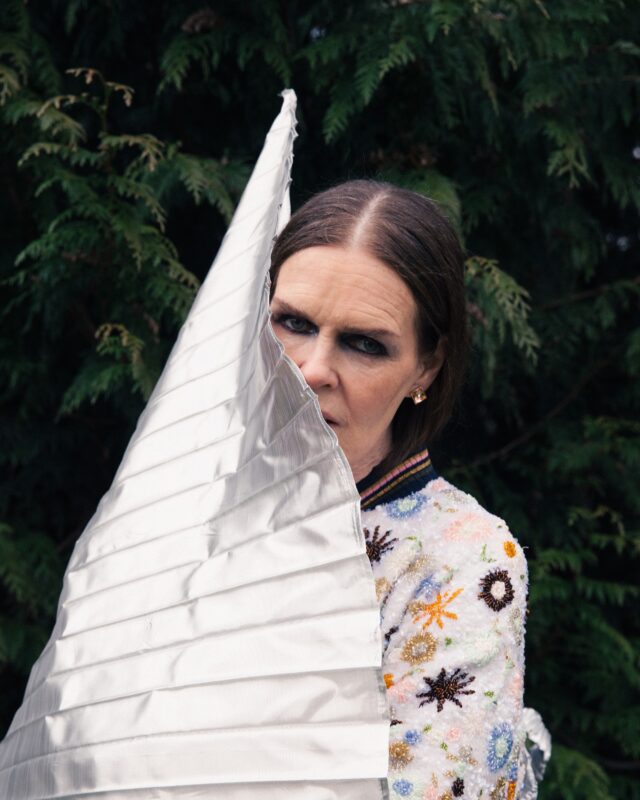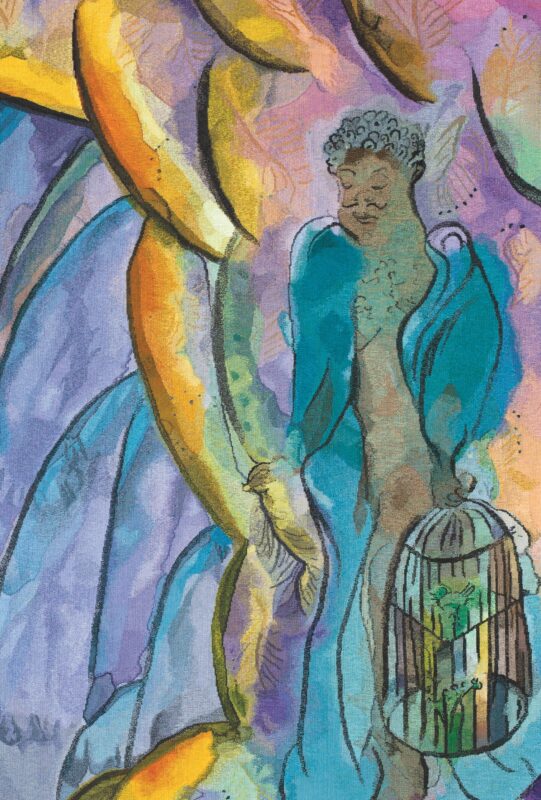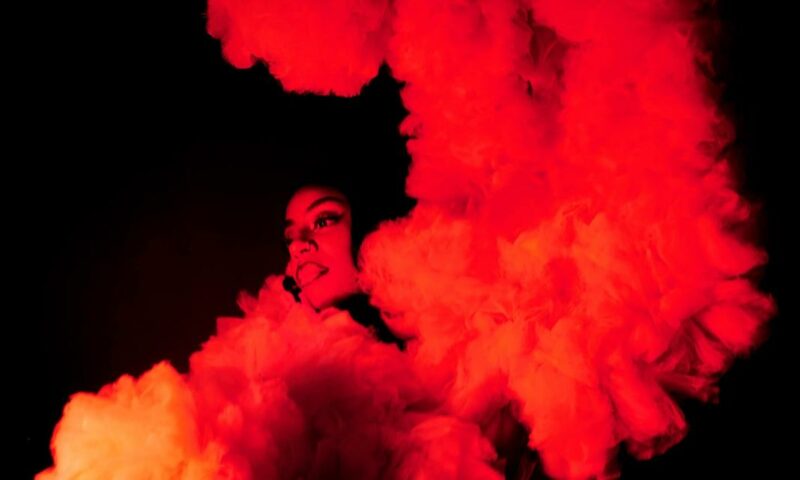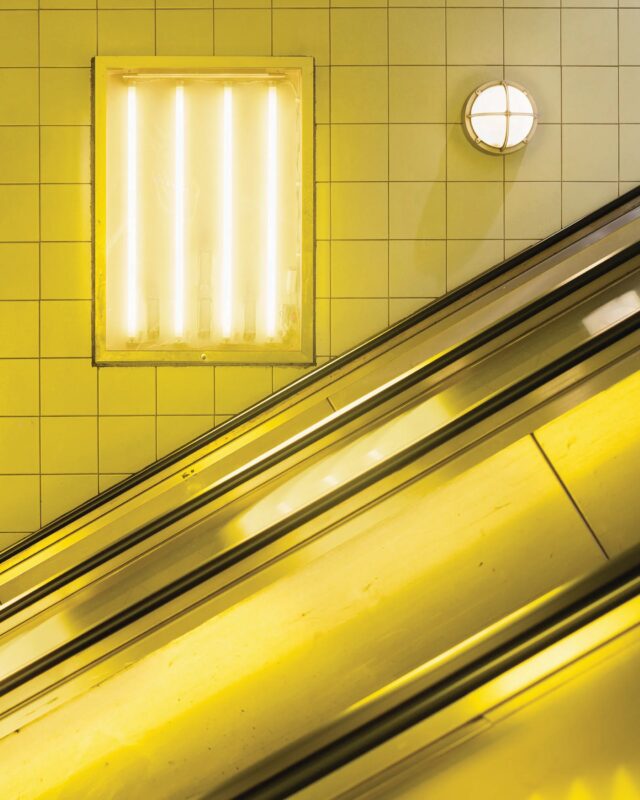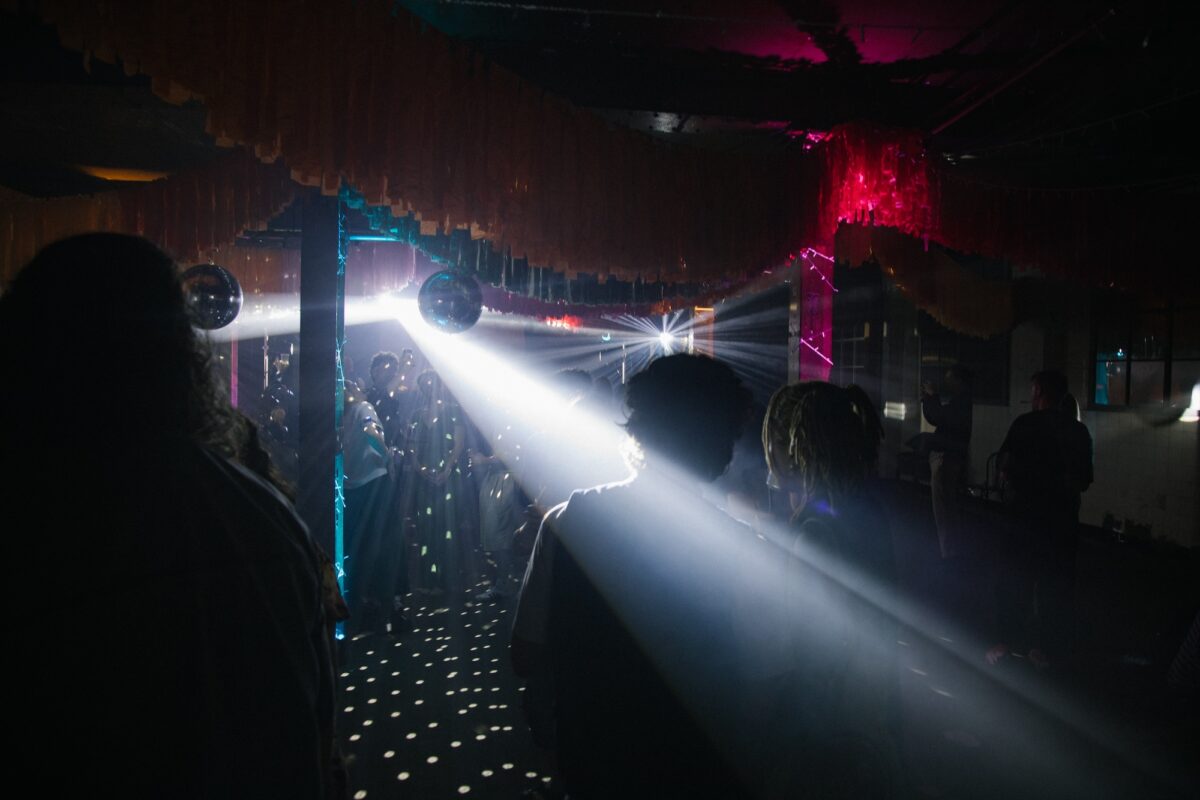
The Edinburgh Art Festival, or the EAF to use the lingo, is 20 this year. Happy Birthday ? Billed as the UK’s largest annual festival for visual art, EAF sits parallel to Edinburgh’s other ‘greatest platform for creative freedom’: the Festival Fringe. Between the 9th and the 25th of August over 55 exhibitions and events are taking place across the city, uniting its historic museums, contemporary galleries, small studio complexes and other arty spaces.
Thematically this year’s EAF is self-reflective, offering a moment for the organisation to pause and to consider both its long-history as well as its interdependence with the city’s sociocultural life. This reflexivity bleeds out-from the program, creating spaces to think about the “conditions under which [a more general] we live, work, gather and rest” to quote Kim McAleese EAF’s Director.
Mature at 20, EAF strives to foreground the internationalism and intersectionality at the heart of Edinburgh, the city, place and thriving art scene; indeed, the off-forgotten internationalism and intersectionality at the heart of our social and ecological world. The meditative programme brings together the local and the global, aiming to amplify connections between the historical and the contemporary, the queer unseen and other abundant forms of living to celebrate those who “inspire change”, who “enable solidarity” and who are working to create “collective futures”, through practices of care and joy and resilience, to sound bit Kim again.
The queer, the post-colonial, the public and live, the historically overlooked as well as the connectedness found in our ecological surround, contextually EAF has it all. More so(!), it has some great art — let’s not forget the art, it’s what I am here for. As the ‘vigintennial’ festivities get going, here are three things I would like to celebrate from this year’s EAF.
Rosie’s Disobedient Press, I am writing in search of
City Art Centre, until August 25th
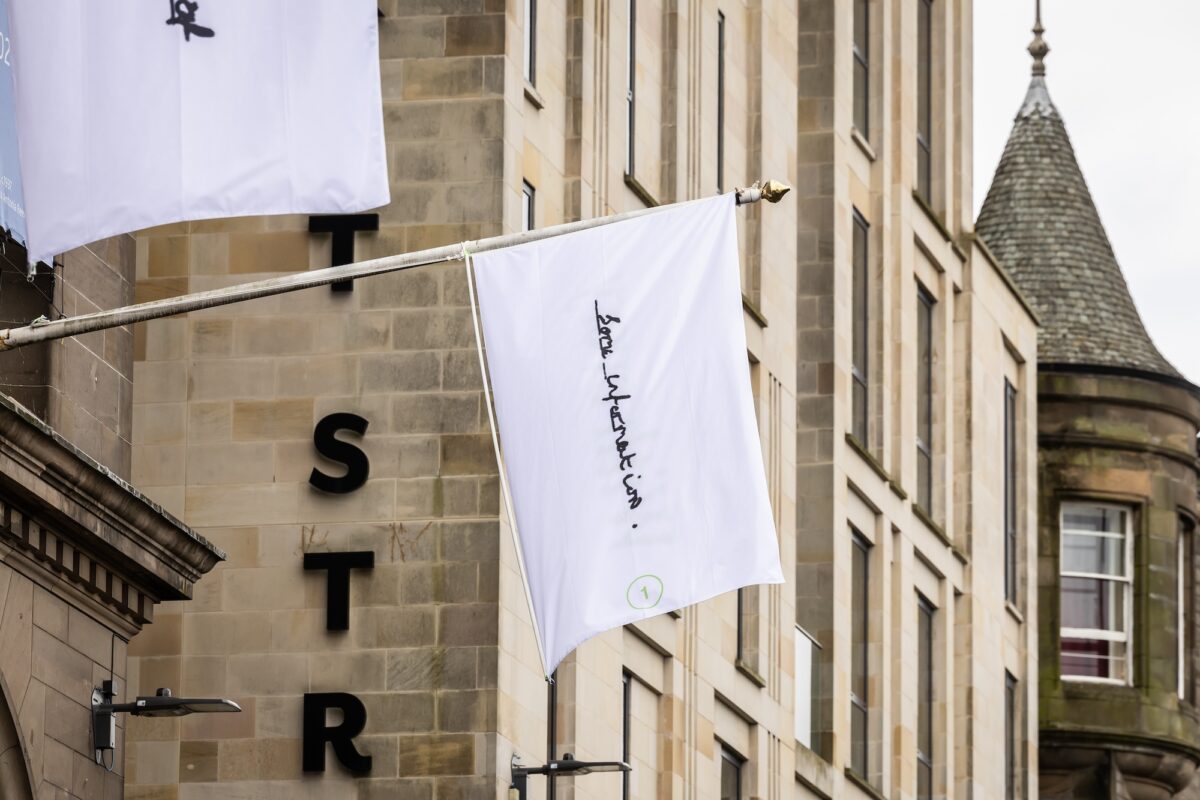
Three flags call to us from the facade of Edinburgh’s City Art Centre. They read and beckon, in slanting handwriting, “I am writing to you / in search of some information .” (the space before that dot intended). These signs allude to the research project I am writing in search of established on the occasion of EAF by Rosie’s Disobedient Press (Rosie), an artist-led organ constituted by Lisette May Monroe and Adrien Howard. Aligning with the self-reflective theme of this year’s EAF, since January 2024 Rosie has been thumbing through a number of Edinburgh’s activist archives, be these public or more personal, all somewhat hidden. The aim of their felt looking: to resurface the working-class, queer, suppressed and otherwise interconnected histories of socio-political resistance reverberating through the social architecture of the city, allowing these effaced narratives to adorn the streets anew.
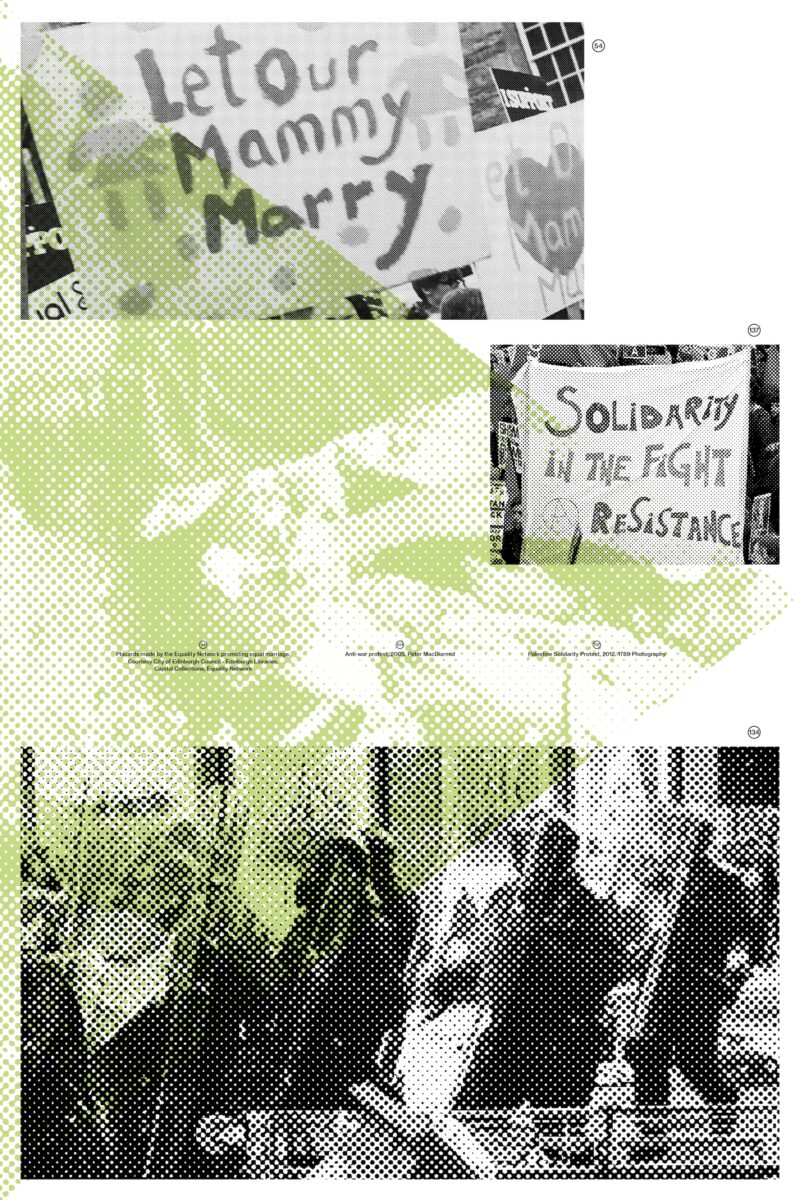
Visually and physically, the material stuff of Rosie’s research is punkish; restive collages made by juxtaposing cropped headlines and handwritten text against soft-grain photographs and aged activist illustrations. With each element in these collages coming from one of the archival sources investigated, they appear all dissident in formation — trembling with the awesome energy of a multifaceted protest march. Aligning with this sensibility, Rosie’s tenacious image-text compositions live outside the rigidities of an ‘artistic’ display, appearing printed upon pay-what-you-can caps and t-shirts, upon pins, lanyards and posters, with further contextual conversations framing the research housed within a free pink paged newspaper.
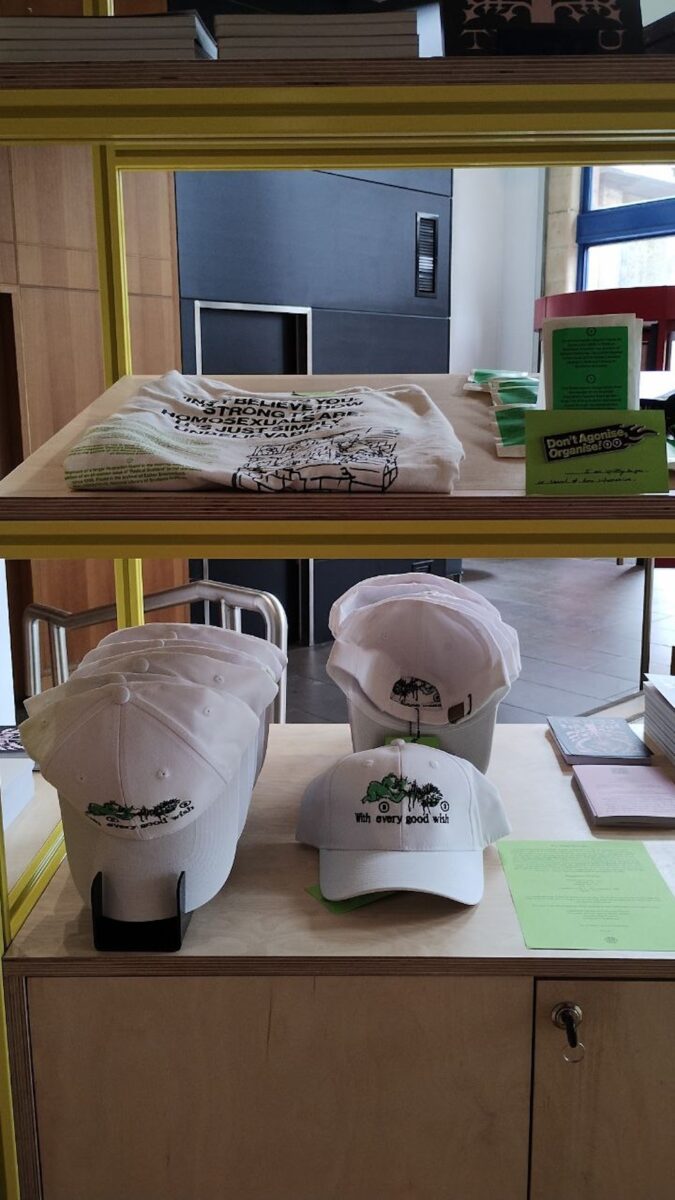
Importantly, each of the details in these collages sits alongside a floating footnote, an indicative circle pointing to each of the subcultural sources sited [sic]. By exposing these archival foundations, Rosie not only pays testament to the hidden histories of the city but allows us to draw contemporary connections between the numerous social struggles we still face. Donning a cap, “with every good wish”, we become part of this small press resistance.
Más Arte Más Acción, Around a Tree – A marathon of voices to connect plants and people
Royal Botanical Gardens, until August 25th
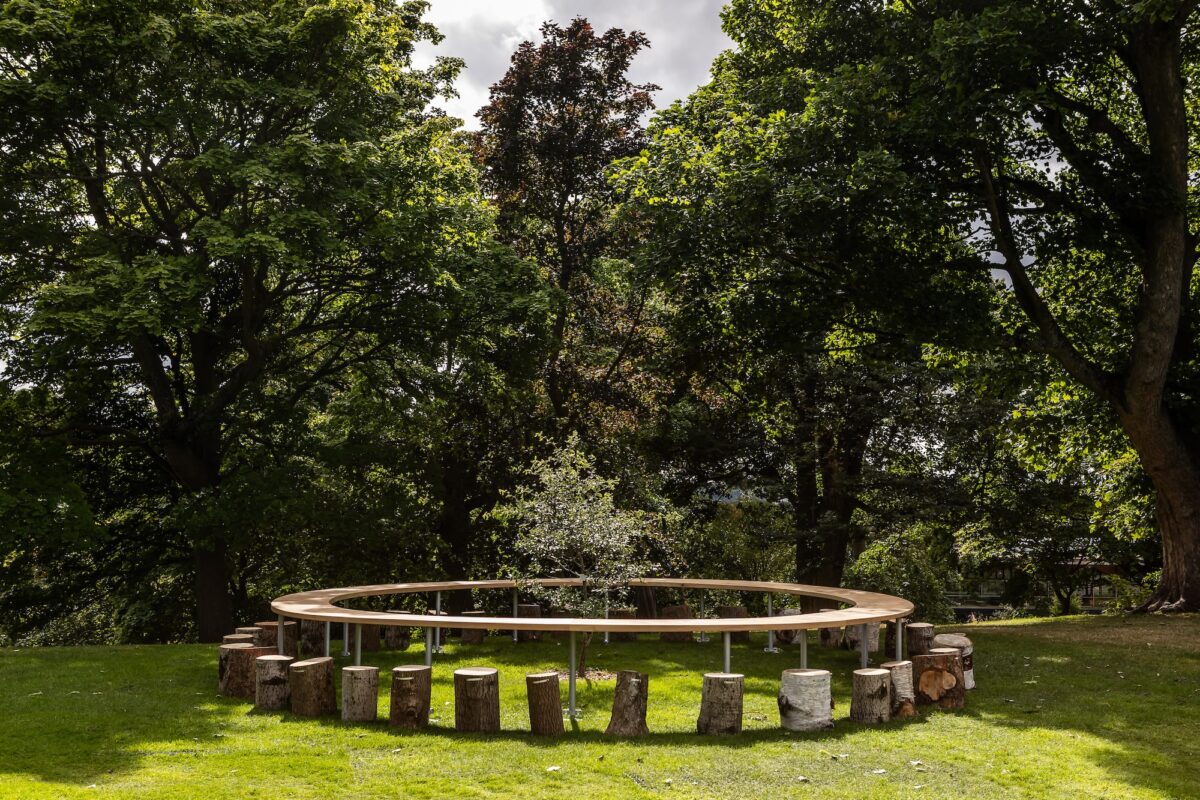
I am always partial to a minimal aesthetic. Personally, the barest of situations demand a particularly affective engagement, transforming us from passive viewers into complicit witnesses. Más Arte Más Acción’s (MAMA) public intervention upon the manicured lawn of the Royal Botanical Gardens, titled Around a Tree – A marathon of voices to connect plants and people, aligns with this aesthetic and the perspective it demands; MAMA’s marathon appears as a simple oak-toped round table surrounded by tree stump stools, softly accompanied by the chatter of a soundscape.
A Colombian not-for-profit cultural foundation, MAMA self-consciously feels out of place within soiled art environments. A forest-based organism they prefer to function across and in the spaces between different social, political and ecological situations. The work (the sense of which here denotes more than a synonymous short-hand to name a sole work of art, alluding to a verby process of action) included in EAF is demonstrative of this, with this marathon previously finding form at events such as COP26 (Glasgow 2021), documenta fifteen (Kassel 2022) and the International Botanical Congress (Madrid 2024) — in 2025 the marathon will travel to Brazil for COP30.
Rather than a typically artistic restaging of stuff — just the physical installation of a table and stumps — MAMA’s marathon is an occasion; a moment to come together and to collectively discuss the interconnectedness of human to more-than-human life forms, plants in particular, highlighting in turn how the degradation of the Earth’s biodiversity is killing our Earthy ways of being. (For me it is interesting to think about how this death of biodiversity echoes across our political lives, with the growing heat of the far right effacing our human abilities to grow in harmony through our differences.) Something of a sonic compost, the audio from each of these conversations is recorded and feedback into the marathon’s flowering soundscape. This non-invasive work then travels with the foundation to its various social, political or artistic engagements, allowing differently situated voices to hear from and operate in time with one another.
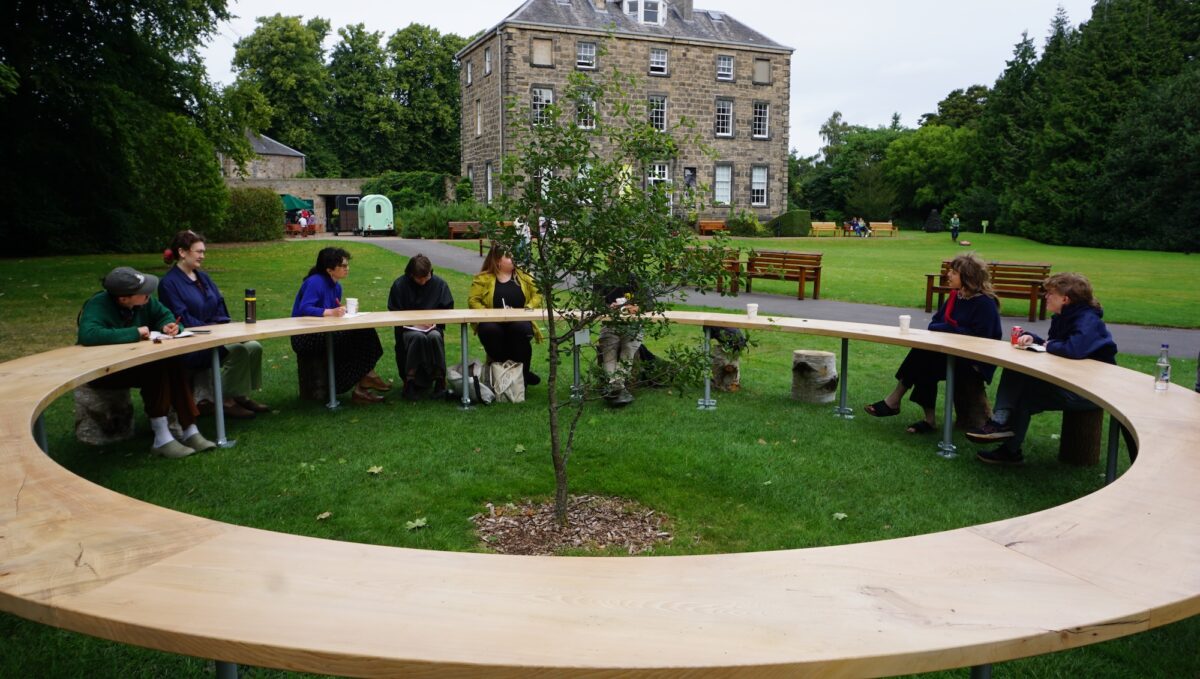
For EAF MAMA has organised a number of these conversations, each taking place around that wooden table. Rather than just being a structural stage for talking, this table and its accompanying stump stools act as material catalysts; the table itself has been carved from a Lebanese cedar tree, planted in the Royal Botanic Garden in 1859, which was felled recently because of a microbiological infection — due to climate change such infections, such as ash dieback, are becoming more and more rampant.
More than a doom and gloom finger-pointing, MAMA’s public activations here happen around a restorative gesture; their table has been constructed around a newly planted Portuguese oak — a species of oak which scientists suspect to be better able to cope with Scotland’s further climate. Simple and affective, I read this living aspect of MAMA’s marathon as a critical allusion to the ways in which our dying World — both our sociopolitical and ecological World — can only begin to heal if we let life practices found elsewheres resonate with and through us.
Prem Sahib, Liquid Gold
Bard, until August 25th
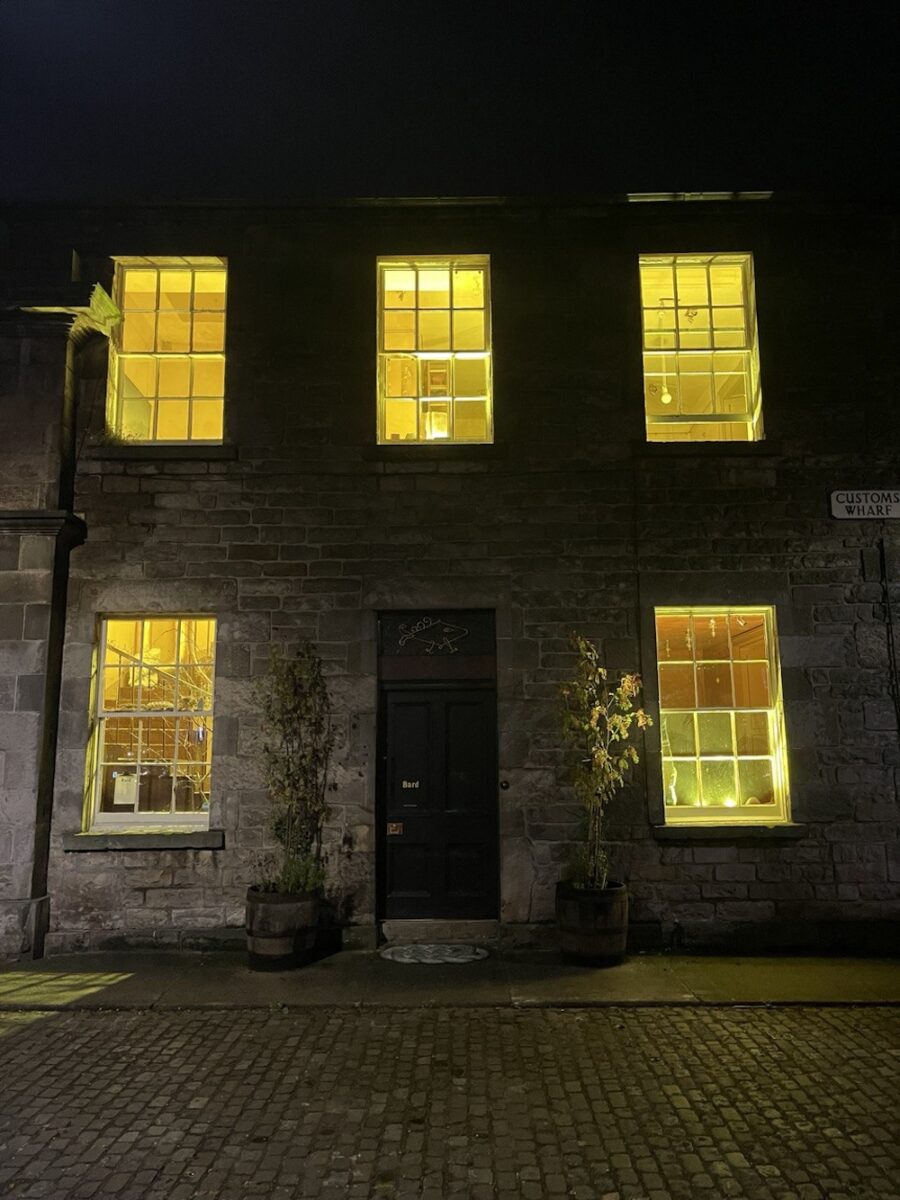
To say ‘you blink and you miss it’ is something of a synonymous sleight-of-hand, a phrasal fallacy. Prem Sahib’s Liquid Gold (2016-ongoing) is a site-specific light installation, here subtly co-opting the Georgian exterior of Bard — a gallery and studio based within one of Scotland’s oldest customs buildings. Only visible ‘after hours’, when Edinburgh’s extra light evenings draw towards their end, formally the work is nothing (and so) much more than a dusty-yellow glow emanating from each of the building’s boxy windows.
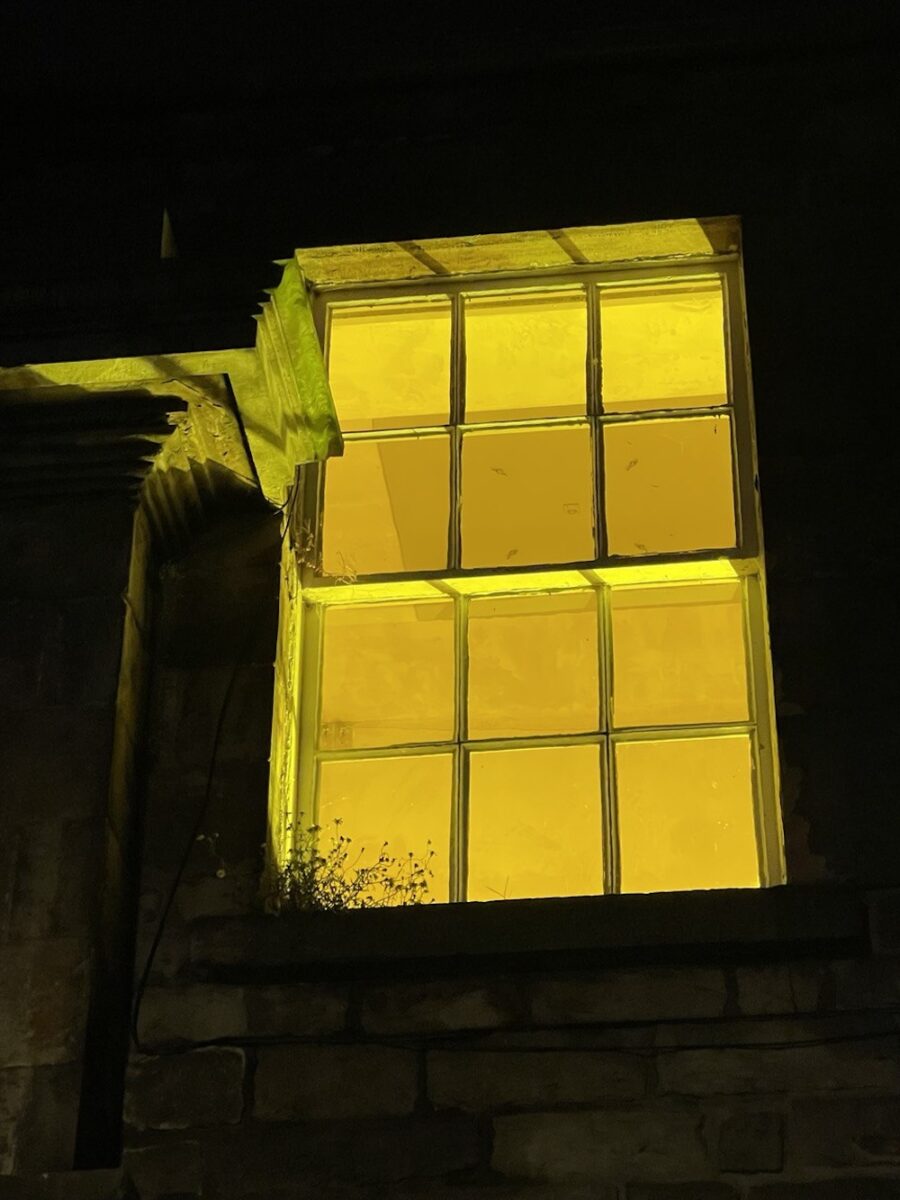
It’s a shape shifting work, quizzical and quiet, liquid, both filling and overfilling the Bard building, making this solid structure porous. A continuation of Sahib’s interest in the ‘codified relationships inherent within colour, form and spatial contexts’, the glow constituting this installation of Liquid Gold can not only be seen to refract the fiscal and legislative history of the Bard building, as well as the surrounding complex of portside properties, but eeps with allegorical allusions to divinity and power; allusions to the spiritual, the energy of the sun, as well as to higher ideals, Platonic or Kantian. On a critical level, by making his installation only visible from the street, when the gallery is closed, Sahib challenges the very architectonic idea of a threshold and the customs governing who, how, and what is able to enter an inside, where and how borders can even be drawn. At a moment when the pains of conservatism feel all too enclosing, across the UK and elsewheres, Liquid Gold reflects how the physicality of an inside, whether we want to think about this spatially or socially, in terms of gender or geographic belonging, is a glassy illusion always able to be transcended.
It is of note that on August 16th Sahib will perform a new iteration of his performative work Alleus. One to see if you are around!
EAF (Edinburgh Art Festival) 9th-25th August edinburghartfestival.com
